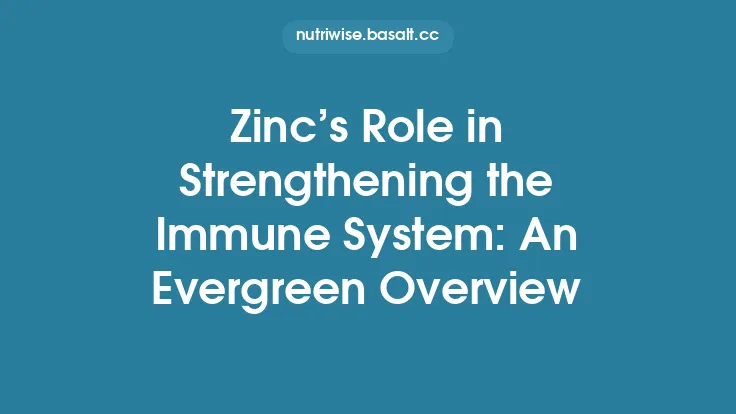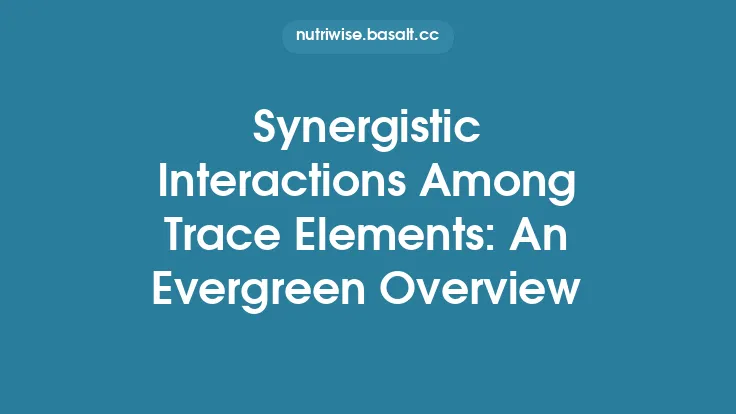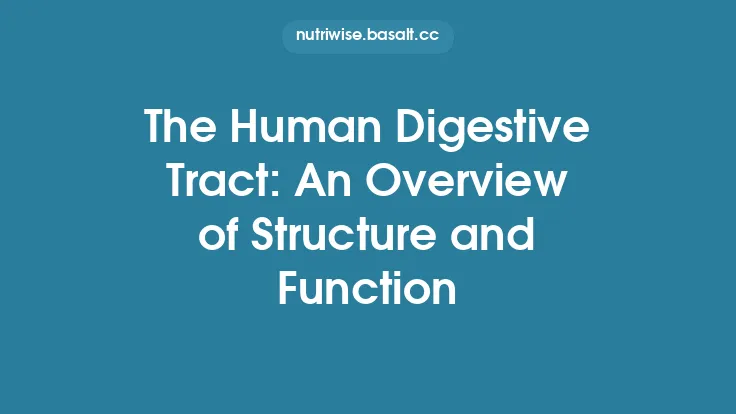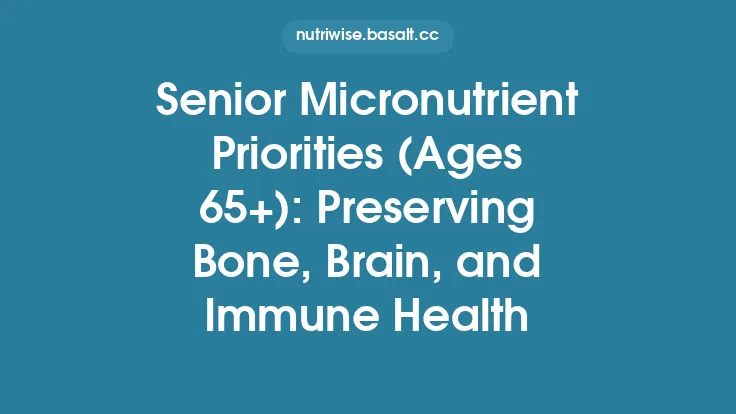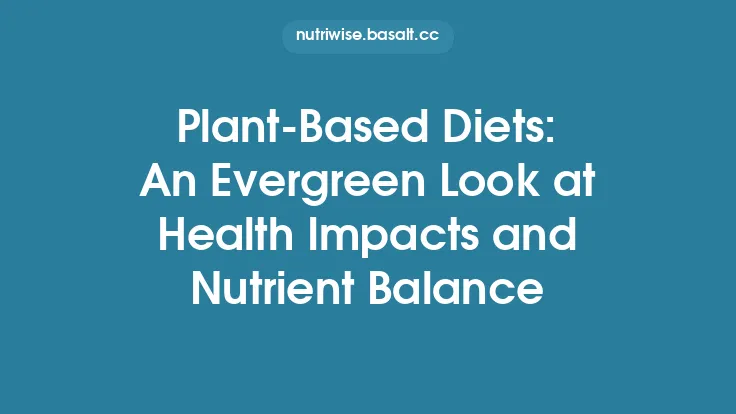Vitamin C is one of the most widely studied micronutrients, yet its role in supporting the immune system remains a cornerstone of nutritional immunology. While the vitamin’s antioxidant capacity is often highlighted, its contribution to immune competence extends far beyond simple free‑radical scavenging. This overview synthesizes the enduring, evidence‑based concepts that link vitamin C to the myriad cellular and molecular processes that keep the body’s defenses robust, regardless of the latest dietary trends or fleeting research fads.
Vitamin C in the Architecture of the Immune System
The immune system can be divided into two interlocking arms: innate immunity, which provides rapid, non‑specific defense, and adaptive immunity, which generates targeted, memory‑based responses. Vitamin C is uniquely positioned to influence both arms because it is present at millimolar concentrations in most immune cells—far higher than in plasma. This intracellular reservoir enables vitamin C to act as a co‑factor for enzymes, a regulator of redox‑sensitive signaling pathways, and a stabilizer of extracellular matrices that form physical barriers against pathogens.
Key points of integration include:
- Redox regulation of signaling cascades – Many immune‑cell activation pathways (e.g., NF‑κB, MAPK) are modulated by the cellular redox state. Vitamin C helps maintain a reduced intracellular environment, ensuring that signal transduction proceeds without aberrant oxidative inhibition.
- Enzymatic co‑factor functions – Vitamin C serves as a co‑factor for dioxygenases involved in the hydroxylation of pro‑line and lysine residues, a step essential for the proper folding of collagen‑rich extracellular matrices that line mucosal surfaces. Although collagen synthesis per se is covered elsewhere, the structural integrity of these barriers is a prerequisite for effective immune surveillance.
- Gene expression modulation – Epigenetic enzymes such as ten‑eleven translocation (TET) dioxygenases require vitamin C to demethylate DNA and histones, thereby influencing the transcription of genes involved in immune cell differentiation and cytokine production.
Cellular Uptake and Distribution: How Immune Cells Stockpile Vitamin C
Immune cells acquire vitamin C through two primary transport mechanisms:
- Sodium‑dependent vitamin C transporters (SVCT1 and SVCT2) – These high‑affinity carriers import the reduced form, ascorbate, into the cytosol. SVCT2, in particular, is highly expressed in neutrophils, monocytes, and lymphocytes, enabling rapid accumulation to concentrations up to 10 mM, which is roughly 100‑fold higher than plasma levels.
- Glucose transporters (GLUTs) for the oxidized form, dehydroascorbic acid (DHA) – When extracellular oxidative stress converts ascorbate to DHA, immune cells can import DHA via GLUT1 and GLUT3. Inside the cell, DHA is promptly reduced back to ascorbate by glutathione‑dependent enzymes, effectively recycling the vitamin and preserving the intracellular pool.
The kinetic advantage conferred by these transporters means that, during an infection, immune cells can quickly replenish their vitamin C stores, supporting the heightened metabolic demands of activation, proliferation, and effector functions.
Supporting Innate Immunity: Neutrophils, Macrophages, and the Oxidative Burst
The innate immune response relies heavily on phagocytic cells that engulf and destroy pathogens. Vitamin C contributes to several critical steps:
- Chemotaxis and migration – Ascorbate modulates actin polymerization, facilitating the directed movement of neutrophils toward infection sites. In vitro studies demonstrate that sub‑optimal vitamin C levels impair chemotactic speed and accuracy.
- Phagosome formation and maturation – Vitamin C influences the assembly of the NADPH oxidase complex, which generates superoxide radicals during the oxidative burst. While the burst is a potent antimicrobial mechanism, it also produces reactive oxygen species (ROS) that can damage host proteins. Vitamin C’s capacity to neutralize excess ROS protects phagocytes from self‑inflicted oxidative injury, preserving their functional lifespan.
- Degranulation and antimicrobial peptide release – Granule exocytosis, a process essential for delivering enzymes such as lysozyme and defensins, is enhanced by adequate intracellular ascorbate. Vitamin C deficiency correlates with reduced granule content and diminished bactericidal activity.
- Macrophage polarization – Vitamin C skews macrophage differentiation toward the M1 phenotype, which is pro‑inflammatory and efficient at pathogen clearance, while also preventing excessive M2‑driven tissue remodeling that could compromise barrier integrity.
Modulating Adaptive Immunity: Lymphocyte Proliferation and Cytokine Balance
Adaptive immunity hinges on the clonal expansion of B and T lymphocytes and the precise orchestration of cytokine networks. Vitamin C exerts influence at multiple junctures:
- DNA synthesis and cell division – As a co‑factor for enzymes involved in collagen‑like scaffold formation within the nucleus, vitamin C supports the structural reorganization required for rapid lymphocyte proliferation. Experimental models show that ascorbate supplementation accelerates the S‑phase entry of activated T cells.
- Cytokine production – Vitamin C modulates the transcription of key cytokines such as interleukin‑2 (IL‑2), interferon‑γ (IFN‑γ), and tumor necrosis factor‑α (TNF‑α). By maintaining a reduced intracellular environment, it prevents oxidative inhibition of transcription factors that drive cytokine gene expression.
- Antibody class switching – In B cells, vitamin C influences the activity of activation‑induced cytidine deaminase (AID), an enzyme essential for somatic hypermutation and class‑switch recombination. Adequate ascorbate levels are associated with higher affinity IgG production.
- Regulatory T‑cell (Treg) balance – Excessive oxidative stress can favor Treg expansion, dampening immune responses. Vitamin C’s redox buffering helps maintain an optimal Treg‑to‑effector T‑cell ratio, ensuring that immune activation is neither insufficient nor overly suppressive.
Barrier Defense: Vitamin C and Mucosal Integrity
Physical barriers—skin, respiratory epithelium, gastrointestinal lining—constitute the first line of defense against invading microbes. Vitamin C contributes to barrier robustness through:
- Collagen‑rich extracellular matrix maintenance – While the biochemical pathway of collagen synthesis is well documented, its relevance to barrier function is evergreen: a well‑structured matrix prevents pathogen translocation. Vitamin C’s role as a hydroxylation co‑factor ensures that collagen fibers are correctly cross‑linked, preserving tissue tensile strength.
- Tight‑junction protein stability – Redox‑sensitive proteins such as occludin and claudins, which seal intercellular spaces, are protected from oxidative modification by intracellular ascorbate. This protection sustains barrier permeability at physiologically appropriate levels, limiting microbial ingress.
- Mucus production – Goblet cells in the respiratory and intestinal tracts rely on ascorbate‑dependent enzymatic pathways to synthesize mucins, the glycoproteins that trap pathogens. Vitamin C deficiency can lead to thinner mucus layers, compromising the “sticky” trap that precedes immune cell engagement.
Vitamin C Deficiency and Susceptibility to Infections
Historical and contemporary data converge on a clear pattern: insufficient vitamin C status predisposes individuals to a higher incidence and severity of infectious diseases. Classic scurvy, the extreme manifestation of deficiency, is characterized by impaired wound healing, hemorrhagic lesions, and a markedly weakened immune response. Even sub‑clinical depletion—plasma ascorbate concentrations below 23 µmol/L—has been linked to:
- Reduced neutrophil chemotaxis and phagocytic capacity
- Diminished NK‑cell cytotoxicity
- Lowered serum IgG concentrations
- Prolonged recovery times from common respiratory infections
Epidemiological surveys across diverse populations consistently report an inverse relationship between ascorbate status and the frequency of upper respiratory tract infections, especially in high‑stress environments such as military training camps and winter months.
Evidence from Clinical and Epidemiological Studies
A robust body of research, spanning randomized controlled trials (RCTs), cohort studies, and meta‑analyses, underpins the immune‑supportive reputation of vitamin C:
- RCTs in high‑risk groups – Trials involving healthcare workers, athletes, and the elderly have demonstrated that regular vitamin C intake (ranging from 200 mg to 1 g per day) reduces the incidence of colds by 10‑20% and shortens symptom duration by approximately 8 hours.
- Sepsis and critical illness – In intensive care settings, intravenous vitamin C administered as part of a multimodal protocol has been associated with reduced organ failure scores and shorter ventilator dependence, suggesting a role in modulating the hyper‑inflammatory response.
- Vaccination response – Observational data indicate that individuals with higher baseline ascorbate levels exhibit stronger seroconversion rates following influenza and pneumococcal vaccinations, hinting at an adjuvant‑like effect on adaptive immunity.
- Population‑level analyses – Large cohort studies (e.g., NHANES) reveal that participants in the highest quintile of plasma vitamin C have a 30% lower risk of hospitalization for pneumonia compared with those in the lowest quintile, after adjusting for confounders such as smoking and socioeconomic status.
Collectively, these findings reinforce the concept that maintaining adequate vitamin C status is a pragmatic, low‑risk strategy to bolster immune resilience.
Practical Considerations for Maintaining Adequate Levels
While the article refrains from prescribing specific supplementation regimens, several timeless principles can help individuals sustain optimal vitamin C concentrations:
- Regular dietary intake – Consuming a variety of fruits and vegetables throughout the day ensures a steady supply of ascorbate, taking advantage of the vitamin’s water‑soluble nature and limited storage capacity.
- Timing around stressors – Physical exertion, acute illness, and psychological stress increase urinary excretion of vitamin C. Aligning intake (e.g., with meals) during these periods can offset heightened losses.
- Avoiding excessive oxidative load – Lifestyle factors that generate large amounts of ROS (e.g., smoking, excessive alcohol, high‑intensity endurance training) can deplete intracellular ascorbate faster than it can be replenished, underscoring the need for vigilant intake.
- Monitoring status in at‑risk groups – Individuals with malabsorption syndromes, chronic kidney disease, or certain genetic polymorphisms affecting SVCT transporters may benefit from periodic assessment of plasma ascorbate to guide dietary adjustments.
Future Directions and Emerging Research
The intersection of vitamin C biology and immunology continues to yield novel insights:
- Epigenetic reprogramming – Ongoing studies explore how vitamin C‑mediated TET activation influences the epigenetic landscape of memory T cells, potentially affecting long‑term immunity and vaccine efficacy.
- Metabolic rewiring – As immune cells shift between glycolysis and oxidative phosphorylation during activation, vitamin C appears to modulate key metabolic enzymes, a frontier that may reveal therapeutic windows for immunometabolic disorders.
- Nanocarrier delivery – Innovative formulations (e.g., liposomal or polymeric nanoparticles) aim to enhance intracellular delivery of ascorbate to immune cells, maximizing its functional impact while minimizing systemic clearance.
- Synergy with microbiome‑derived metabolites – Preliminary data suggest that vitamin C may interact with short‑chain fatty acids produced by gut microbes, jointly influencing mucosal immunity and systemic inflammatory tone.
These avenues promise to refine our understanding of how a simple micronutrient can orchestrate complex immune defenses, reinforcing the timeless relevance of vitamin C in human health.
